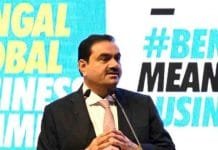Discover the monumental transformation as Adani Group invests $1.5 billion in reshaping Dharavi, Asia’s largest slum. Explore the visionary plans, infrastructure upgrades, and the commitment to social responsibility in this groundbreaking urban revitalization project.
Adani Group’s Monumental Investment: Transforming Dharavi into a Modern Marvel
In a groundbreaking move, India’s largest conglomerate, the Adani Group, has unveiled plans to inject a staggering Rs 12,500 crore (equivalent to $1.5 billion) into the redevelopment of Dharavi, Asia’s largest slum situated in the heart of Mumbai. This transformative initiative not only marks a significant financial commitment but also holds the promise of reshaping the landscape of Dharavi and the lives of its 900,000 residents.
[ez-toc]
A Visionary Collaboration: Adani Group and Maharashtra Government
The Adani Group’s foray into the Dharavi redevelopment project is a testament to its strategic collaboration with the Maharashtra government. Unlike previous attempts that faced legal hurdles and extensive discussions, this venture signifies a renewed commitment to transform Dharavi into a modern urban hub.
Winning the Bid: Adani Group’s Triumph
In a competitive landscape, the Adani Group emerged victorious in the bidding process, leaving behind major players like DLF. This victory not only underscores the financial prowess of the Adani Group but also positions them as the driving force behind the revitalization of Dharavi.
The Scale of Ambition: A Comprehensive Transformation
The Dharavi redevelopment project is not merely a construction endeavor; it’s a comprehensive transformation aimed at converting the 590-acre slum into a vibrant urban center. The project envisions the creation of modern apartments, state-of-the-art offices, and a mall, heralding a new era for Dharavi’s landscape.
Infrastructure Overhaul: Metro Rail and New Roads
Central to the project is an ambitious plan to construct a metro rail network connecting Dharavi to key locations such as Nariman Point, Bandra Kurla Complex (BKC), and Mumbai International Airport. Simultaneously, a new road linking Dharavi to the Bandra-Worli Sea Link is set to alleviate traffic congestion, fostering improved connectivity.
Seven Years, $4-5 Billion: The Project Timeline and Investment
Undertaking such a colossal transformation comes with its timeline and financial implications. The Dharavi redevelopment project is anticipated to span seven years, requiring an estimated investment of $4-5 billion. This significant commitment underscores the long-term vision and dedication of the Adani Group to reshape the urban landscape of Dharavi.
Surveying Ownership and Master Planning
As a precursor to the construction phase, a meticulous survey is underway to ascertain ownership details of the slum buildings. The master plan for the project, a collaborative effort between the state government, the Mumbai Metropolitan Region Development Authority (MMRDA), and the Adani Group, is set to receive joint approval, ensuring a holistic and streamlined approach.
Homes for Dharavi: Adani Group’s Social Commitment
Beyond the infrastructural changes, the Adani Group is committed to social responsibility. The construction of new houses for slum dwellers stands as a testament to this commitment. Chairman Gautam Adani has expressed a clear intention to allocate these homes to eligible residents, signaling a transformative shift in the living conditions of Dharavi’s inhabitants.
Conclusion: Adani Group’s Vision for Dharavi’s Future
In conclusion, the Adani Group’s investment in the redevelopment of Dharavi signifies more than just a financial commitment. It is a visionary undertaking that aims to reshape the narrative of Asia’s largest slum, creating a modern marvel that seamlessly blends urban infrastructure with social responsibility. As the project unfolds over the next seven years, the Adani Group’s imprint on Dharavi’s landscape is poised to be a benchmark for urban redevelopment projects globally.















